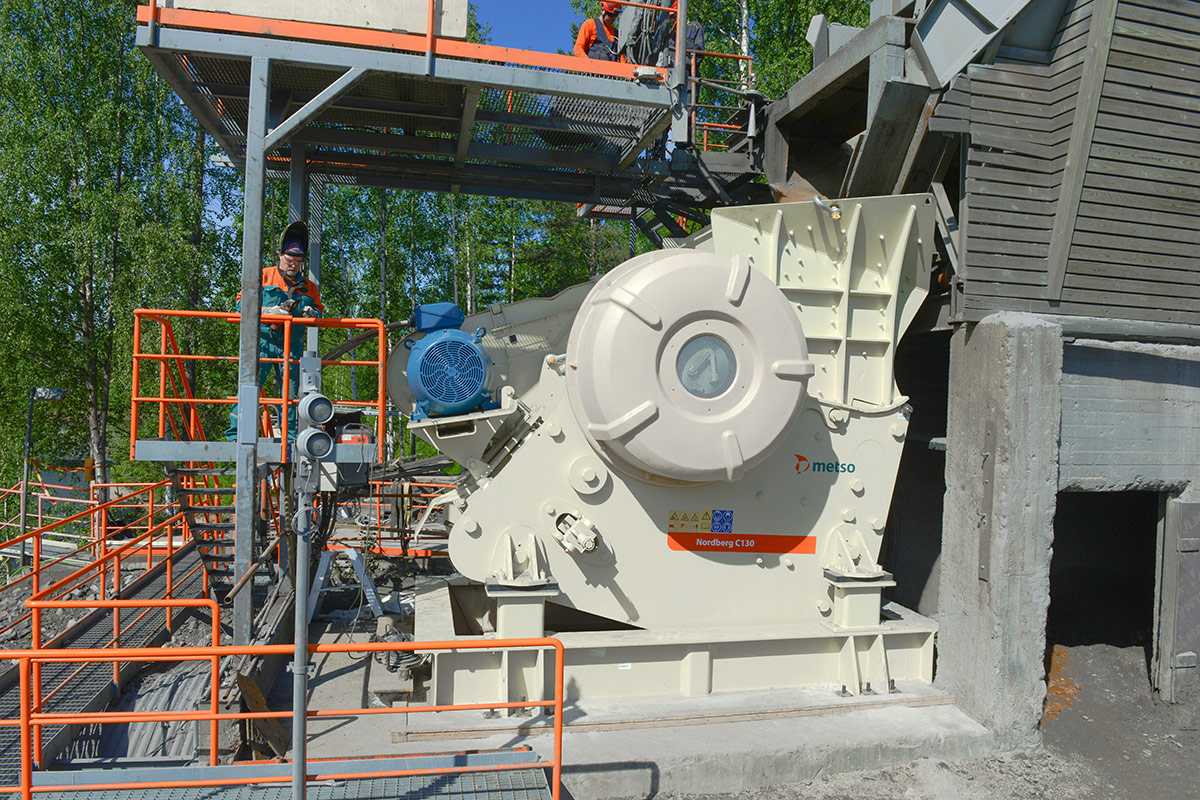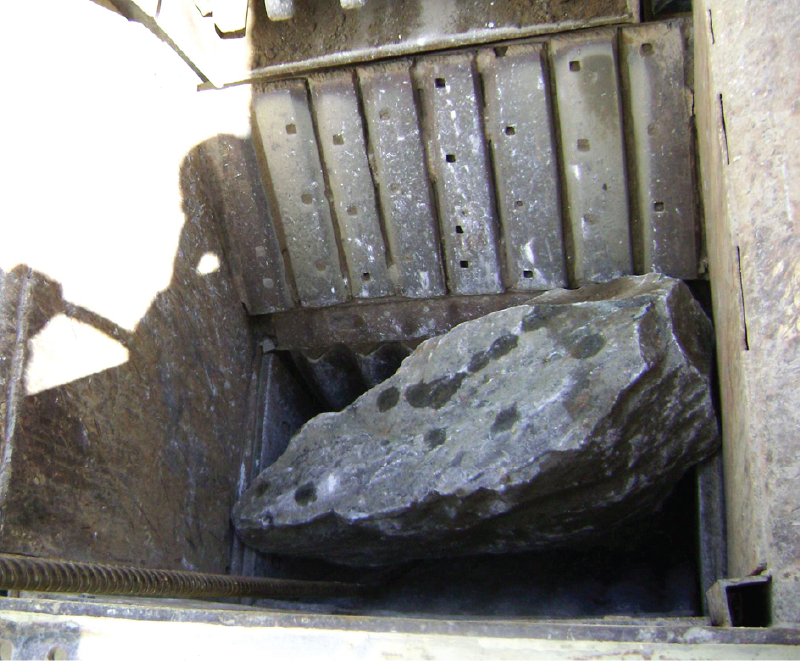Avoid bridging
Continuous bridging in the feeding area of jaw crushers is a common problem.
What is it?
Bridging means stones blocking the flow from entering or moving down in the crushing chamber. It can be caused by just one stone that is larger than the feed opening, or then many average-sized stones of crossing against each other and blocking the crusher’s feed.
Why it is a problem?
Bridging can cause a significant loss of production that oftentimes goes unnoticed. It is relevant to keep an eye on bridging in the feeding area of a primary crusher as it can take several minutes to resolve the issue (big rock being removed, fragmented or directed to the chamber). If it occurs say ten times in a day, it quickly leads to one hour of lost production.
If that happens, for instance, in one of our crusher models, C130 with 352 short ton per hour (stph) working capacity and assuming a USD 12 /short ton, the daily loss can easily add up to four thousand dollars.
How to prevent bridging?
Bridging can be avoided by implementing a tight control of the blasting grid to avoid generating oversize material, training the truck loader operator to separate the oversize material at the pit and the primary crushing plant operator visualizing the flow of material to the crusher and controlling the stones’ speed and direction by varying feeder speed and using the hydraulic hammer installed in the area.



